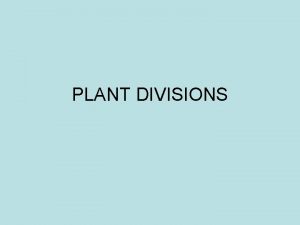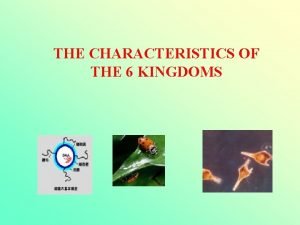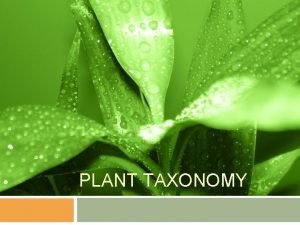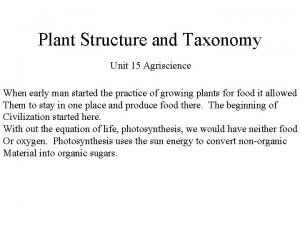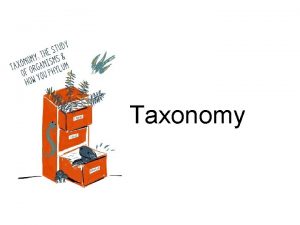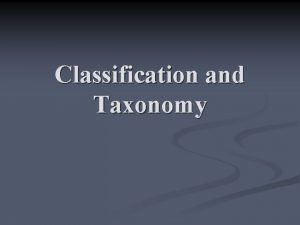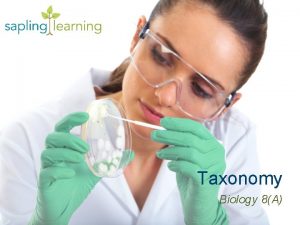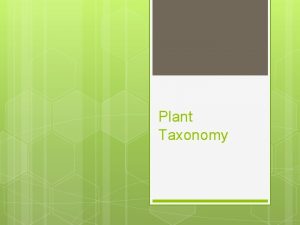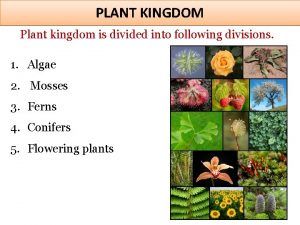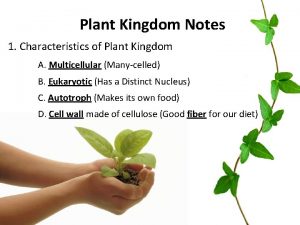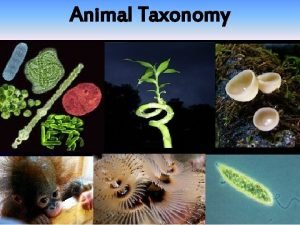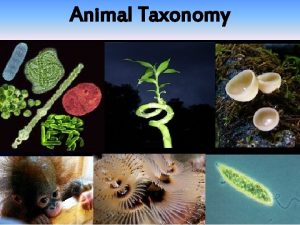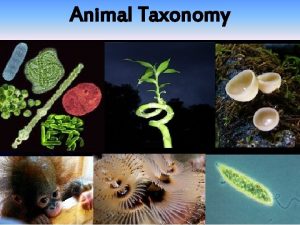Introduction to the Plant Kingdom Plant Divisions Taxonomy
















- Slides: 16

Introduction to the Plant Kingdom

Plant Divisions

Taxonomy n n n Plants are divided into two groups Based on the presence or absence of an internal transport system for water and dissolved materials Called Vascular System Vascular Bundles

Vascular System Vascular system is cylindrical arrangements of specialized cells that transport liquids and nutrients around the plant. n Most plants have vascular systems. n

Vascular System Xylem tissue carries water and minerals upward from the roots. Does not need energy to move. Uses capillary action. n Phloem tissue carries sugars made by photosynthesis from the leaves to where they will be stored or used. Needs energy to move. n

Plant Divisions

Plant Divisions

Plant Divisions

Mosses and Liverworts Characteristics: n Non-Vascular n Require a constantly moist environment n Limited in the size that they can grow n Use diffusion to transport materials

n Includes mosses, liverworts, and hornworts Liverworts Hornworts

Main Parts of Vascular Plants n n Shoots -Found above ground -Have leaves attached - Photosynthetic part of plant Roots -Found below ground -Absorb water & minerals -Anchor the plant

Vascular Plants n Subdivided into two groups – Seedless (no seeds) vascular plants and Seed -bearing (have seeds) vascular plants Club Moss

Seedless Vascular Plants Ferns Characteristics: n Have no seeds n Reproduce using spores n Have a vascular system

Gymnosperms Conifers: Includes pine, cedar, spruce n Cycads n Ginkgos Characteristics: n Have naked seeds. n Have male and female trees n Cycad Ginkgo

Gymnosperms Contains the oldest living plant – Bristle cone pine n Contains the tallest living plant – Sequoia or redwood n

Angiosperms n n n The word Angiosperm means Flowering plants make up the largest class of vascular plants The flowers vary in colour from brightly coloured to dull
 Old kingdom middle kingdom new kingdom
Old kingdom middle kingdom new kingdom Old kingdom middle kingdom new kingdom
Old kingdom middle kingdom new kingdom Youtube
Youtube Mentohotep
Mentohotep Kendall and marzano's new taxonomy
Kendall and marzano's new taxonomy Divisions of plants
Divisions of plants Animal kingdoms characteristics
Animal kingdoms characteristics Livestock classification chart
Livestock classification chart Scope of plant breeding
Scope of plant breeding Plant breeding for disease resistance
Plant breeding for disease resistance Plant introduction in plant breeding
Plant introduction in plant breeding Kingdom fungi and kingdom plantae similarities
Kingdom fungi and kingdom plantae similarities Plantae
Plantae Eukarya fungi
Eukarya fungi Trichomoniasis
Trichomoniasis Classification of plants
Classification of plants Unit 15 plant structures and taxonomy
Unit 15 plant structures and taxonomy





